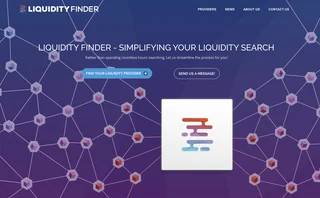
Where there's change, there's opportunity
EDITORS LETTER
In the FX market, a key example of this was during the Asian financial crisis in 1997/98. During that period, capital controls prevented onshore trading in regional currencies, which resulted in the creation of numerous offshore non-deliverable forward (NDF) markets for Asian currencies.
More recently, in January, we saw traders turn to the offshore Thai NDF market to trade after the Bank of Thailand slapped on controls onshore in December. The reforms were on short-term capital inflows, and were aimed at preventing speculative trading and a strengthening baht.
The result was a defined two-tier system of onshore and offshore trading that ran at a 50–60 point difference. Later that month, the central bank stepped in to close that loophole, by banning banks from trading offshore non-deliverable forwards with foreign counterparties. Trading moved back onshore and the central bank eased the controls – a win all round.
In the European Union, there is the Markets in Financial Instruments Directive (Mifid), which comes into force on November 1. The directive presents some challenges, particularly the requirements under best execution.
Investment firms have to demonstrate they are getting the best possible price when executing client orders. Best price in FX is also required if traded on the back of trades involving a Mifid-compliant product, such as equities.
This may or may not present much of a challenge in FX, given the numerous electronic channels available to shop around for best prices. But it is the documentation of this that may actually present an opportunity.
There are a number of ways that dealers can take advantage of this need to document that best price is being used. One way is benchmark fixing products that are established by gathering rates available on the market typically offer a midrate, at varying times during the day. Banks such as Royal Bank of Scotland, Citigroup and HSBC offer this.
Dealers can also take a lead from the platforms that have begun to sell data. As part of the service being offered with its new anonymous trading platform, Accelor, FXall is selling market data. While there is a basic offering that is free, FXall said there are various packages that come with charges. It's understood the data is being sold to help people write models and to trade better, but could the Mifid documentation requirements also spur on sales?
Comments? Contact:
saima.farooqi@incisivemedia.comOnly users who have a paid subscription or are part of a corporate subscription are able to print or copy content.
To access these options, along with all other subscription benefits, please contact info@fx-markets.com or view our subscription options here: https://subscriptions.fx-markets.com
You are currently unable to print this content. Please contact info@fx-markets.com to find out more.
You are currently unable to copy this content. Please contact info@fx-markets.com to find out more.
Copyright Infopro Digital Limited. All rights reserved.
As outlined in our terms and conditions, https://www.infopro-digital.com/terms-and-conditions/subscriptions/ (point 2.4), printing is limited to a single copy.
If you would like to purchase additional rights please email info@fx-markets.com
Copyright Infopro Digital Limited. All rights reserved.
You may share this content using our article tools. As outlined in our terms and conditions, https://www.infopro-digital.com/terms-and-conditions/subscriptions/ (clause 2.4), an Authorised User may only make one copy of the materials for their own personal use. You must also comply with the restrictions in clause 2.5.
If you would like to purchase additional rights please email info@fx-markets.com
More on Market Data
Mosaic to bring real-time performance analytics to FX
Platform will be in production with a major client in third quarter
New Change FX to supply independent rate to Jyske Bank
Danish bank will use provider’s independent FX data for better analytics
LiquidityFinder turns on liquidity matchmaking site
The website offers a consolidated view of liquidity providers for simple comparison
WM/Reuters Thai baht benchmarks to be sourced from Matching Clob
The baht benchmarks are now based on trade data rather than indicative rates
Bloomberg adds real-time market data service to cloud
Its front-office solution, B-pipe, is available via Amazon Web Services
Quick to distribute Fenics’ Kace products in Japan
The agreement enables Quick to offer an integrated solution to clients
Thomson Reuters unit becomes Refinitiv
TR’s Financial & Risk changes name, following majority stake buyout led by Blackstone
Central banks adapt to faster markets, says BIS report
Fast pace of today’s markets means central banks must change approach to fulfil responsibilities







